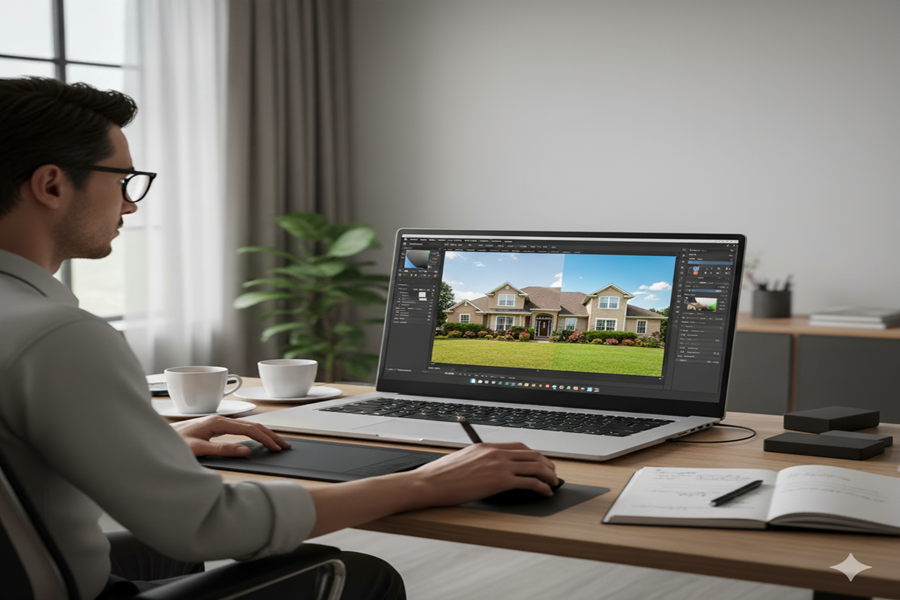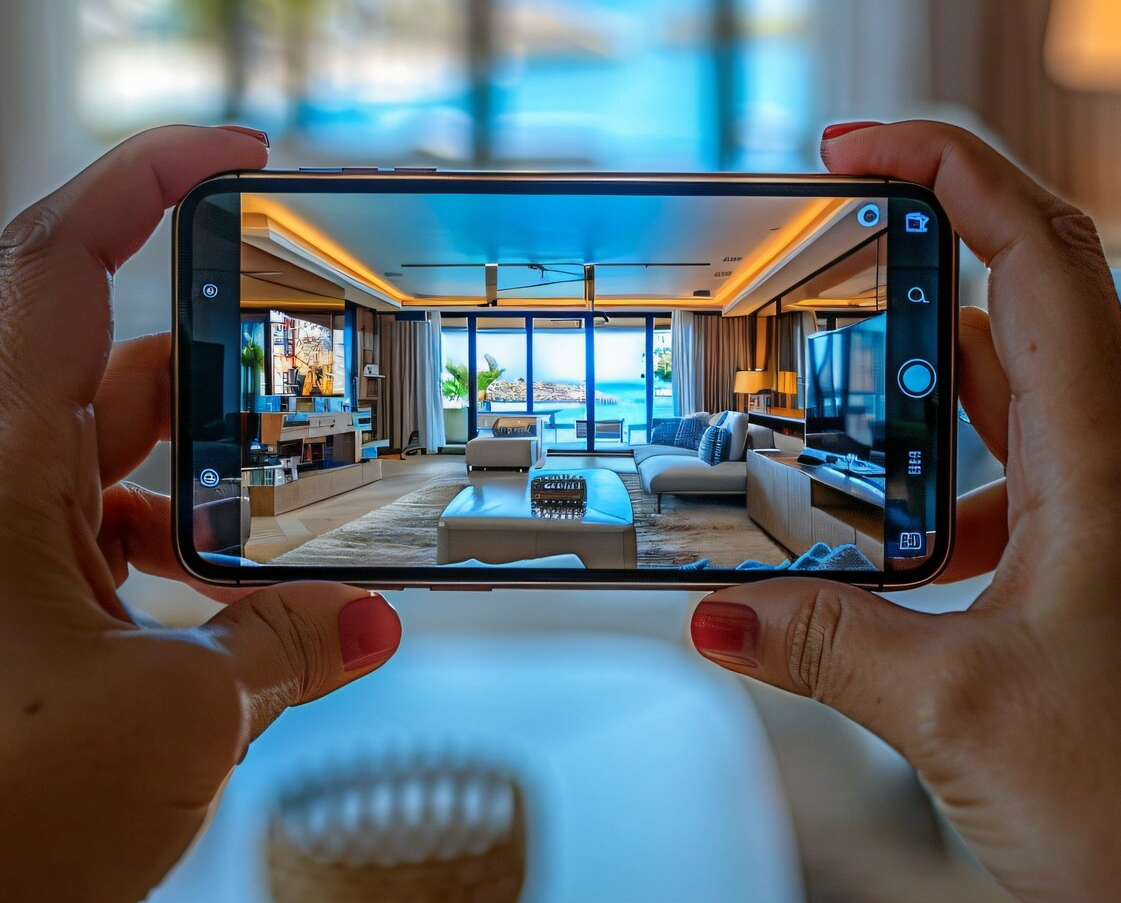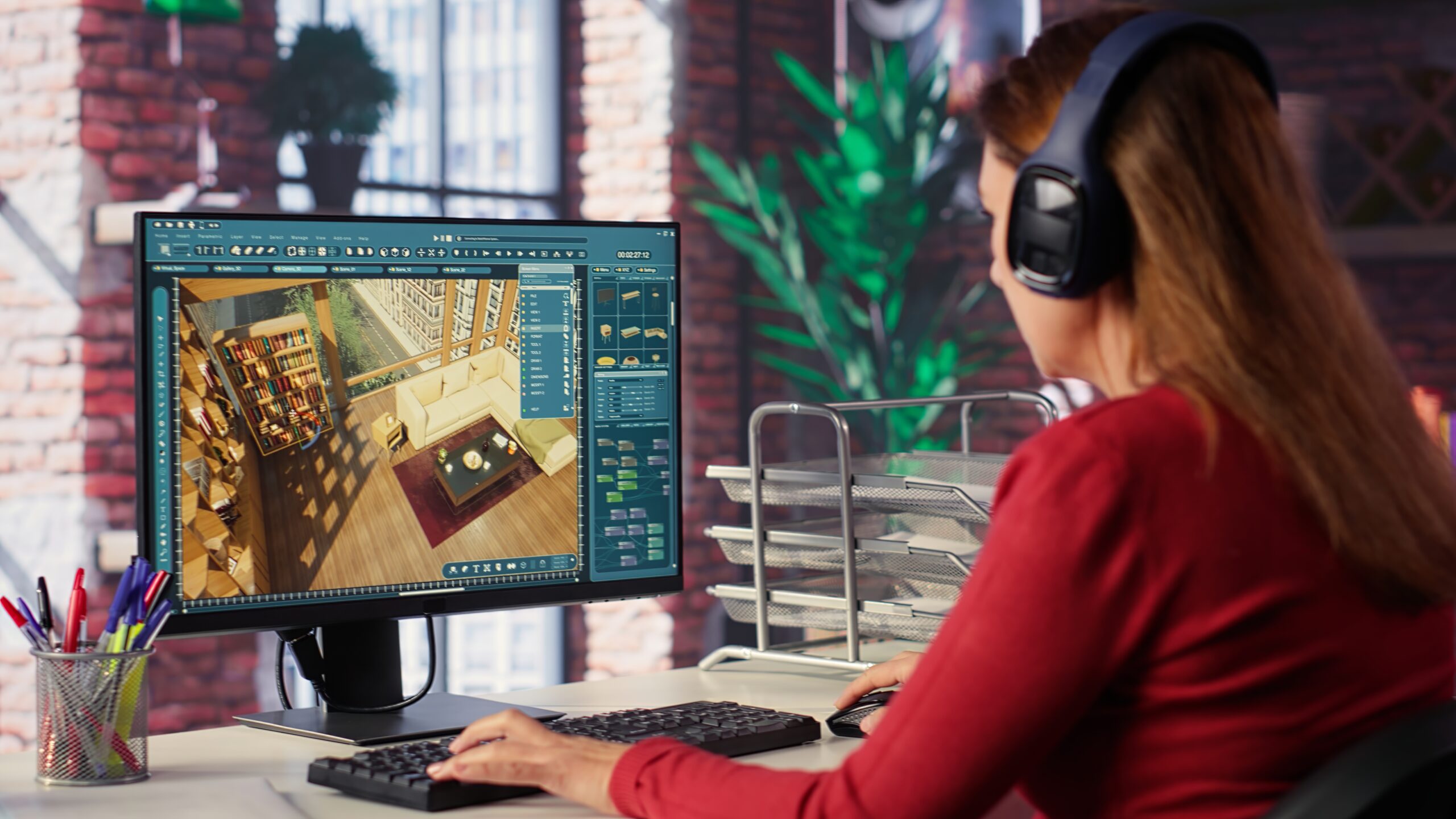As a real estate photographer or videographer, you know that the visuals you create play a massive role in a property’s appeal. Whether it’s for a website, social media, or a listing presentation, high-quality video content has become a must-have for attracting buyers, making properties stand out, and helping agents close deals faster. But when it comes to filming real estate videos, one question that seems to keep popping up is: Should I film my real estate videos in horizontal or vertical format?
You might be wondering whether to follow traditional filmmaking norms with a horizontal (landscape) orientation or experiment with the more modern vertical (portrait) format. The answer isn’t straightforward. There are pros and cons to both, and the choice ultimately depends on your intended platform, target audience, and creative vision. Let’s dive into the details of each format and help you figure out what’s best for your real estate videos in 2025.
Horizontal (Landscape) Format: The Traditional Standard
For decades, horizontal video has been the standard for most forms of video content. It’s how we watch movies, TV shows, YouTube videos, and more. But is horizontal still the way to go in the age of TikTok and Instagram Stories? Let’s take a look at the benefits and drawbacks of horizontal video for real estate marketing.
The Pros of Filming in Horizontal
- The “Movie” Experience Horizontal video is the format most people are used to watching on big screens, whether it’s TVs, computers, or professional presentations. This gives a cinematic feel, which is great when you want to showcase the full beauty of a property, especially large spaces. Filming in landscape allows you to capture wide angles and create expansive shots, making rooms feel more open and airy—something that’s critical in real estate.
- More Flexibility in Editing Horizontal video provides more flexibility during the editing process. You have a wider frame to work with, which means you can crop the video more freely or adjust the composition. It’s also easier to add text, graphics, and subtitles in a landscape format without making them feel too crowded.
- Works Across Multiple Platforms Horizontal videos are widely supported on almost all platforms, from real estate websites to YouTube to professional presentations. If you plan on using your videos in a variety of settings, horizontal will always look great, whether displayed on a desktop computer, TV, or projector.
- Ideal for Wide Shots Horizontal format is the go-to choice for filming large spaces, such as living rooms, kitchens, or even outdoor areas. You can capture everything in one frame without having to pan or zoom excessively. This is especially important when showcasing properties where space is a key selling point.
The Cons of Filming in Horizontal
- Not as Mobile-Friendly One of the drawbacks of horizontal video in 2025 is that it’s not the best format for social media platforms designed for mobile-first experiences. While horizontal video will still play perfectly fine on mobile devices, it doesn’t take full advantage of the screen space on smartphones, especially in the context of apps like Instagram, TikTok, or Snapchat.
- Potential to Lose Audience on Social Media Social media users are more likely to scroll quickly through their feeds, and mobile platforms tend to favor vertical videos. A horizontal video might appear small and require viewers to turn their phones sideways. As a result, your content could easily get skipped over or ignored.
Vertical (Portrait) Format: The Social Media Revolution
Vertical video, once considered a rookie mistake, is now mainstream—thanks to the explosive growth of platforms like Instagram Stories, TikTok, and Snapchat. As more and more people consume content on their phones, vertical video has become the preferred format for mobile-first content creators. But is it the right choice for your real estate videos?
The Pros of Filming in Vertical
- Optimized for Mobile Viewing Vertical video is designed for how we naturally hold our phones: upright. When you film in portrait mode, you make it easier for viewers to watch without having to adjust their device. This is especially important when creating content for platforms like Instagram Reels, TikTok, or Facebook Stories, where vertical video is standard.
- Better for Social Media Engagement If your target audience is active on social media, particularly Instagram and TikTok, vertical videos often lead to better engagement. These platforms are optimized for portrait content, meaning your video takes up more of the screen and is more likely to catch a viewer’s eye as they scroll. Additionally, vertical videos often get more shares and likes compared to horizontal ones on these platforms.
- Convenient for Shorter Videos Vertical video is great for creating quick, attention-grabbing clips—perfect for showcasing highlights, teaser tours, or even before-and-after renovations in bite-sized formats. These short clips are ideal for platforms like TikTok or Instagram Stories, where the focus is on short-form, high-impact content.
- More Natural Look for Human-Centered Shots If you plan to feature real estate agents or homebuyers in your video, a vertical frame can be more natural. People tend to gravitate toward portrait format when filming people’s faces or close-ups. It creates a more personal, engaging experience and helps create a better connection with viewers.
The Cons of Filming in Vertical
- Limited Space for Wide Shots The biggest disadvantage of vertical video is that it’s not great for capturing wide spaces, which is exactly what you want to showcase in real estate. When filming a spacious living room, large kitchen, or outdoor area, a vertical format doesn’t give you the room to display everything in one shot. This means you might need to use multiple clips or extensive panning to show the full property, which can disrupt the flow and viewing experience.
- Limited Professional Platforms While social media platforms love vertical content, real estate websites, YouTube, and property listing platforms still favor horizontal videos. If you plan on using your videos on multiple platforms, vertical content may not provide the same professional feel as a cinematic horizontal video. It can also appear strange or poorly formatted when viewed on a large screen.
- Less Flexibility in Editing The vertical format provides less room for adjustments or cropping. You also have fewer options for adding text and other graphic elements without cluttering the frame. While it’s easier to create a dynamic, mobile-friendly video, the lack of space can sometimes restrict creativity in post-production.
When Should You Choose Horizontal vs. Vertical?
The decision of whether to film horizontally or vertically depends on the intended purpose and platform for the video. Let’s look at some key scenarios and how each format can be used:
1. For Social Media Platforms (Instagram, TikTok, Facebook Stories, Snapchat):
- Go vertical. Social media platforms thrive on short-form, vertical content. If your goal is to boost engagement, attract attention, and reach mobile viewers, filming vertically is the way to go. Instagram Stories, Reels, and TikTok all favor portrait videos because they’re designed to be watched on mobile devices.
2. For YouTube or Property Listing Websites:
- Go horizontal. If you’re creating a full-length property tour or showcasing a home’s interior on YouTube or a property listing site, horizontal is still the gold standard. It’s more cinematic, captures expansive rooms, and aligns with the layout of most professional platforms.
3. For Teasers and Snippets:
- Go vertical for social media snippets. If you’re creating a teaser or a highlight clip of the property for social media, vertical videos can quickly grab attention and drive traffic to your full video on another platform. Think of quick before-and-after shots, quick home features, or exterior views for Instagram Reels or TikTok.
4. For Real Estate Presentations or High-End Marketing:
- Go horizontal. When the stakes are high and you need to impress potential buyers with the full scope of a property, horizontal video will provide a more professional and expansive presentation. Whether it’s a luxury home tour or a commercial property, horizontal allows you to capture it all in stunning detail.
Final Verdict: Mixing Both Formats for Maximum Impact
In 2025, it’s not about choosing one format over the other. The best approach might be to use both formats strategically depending on the platform and the message you want to convey.
- For social media: Film quick, engaging clips in vertical format.
- For full property tours: Use horizontal video to show expansive, detailed shots.
- For dynamic marketing: Mix both formats in different parts of your marketing strategy to engage audiences across multiple platforms.
Real estate is a visual business, and the right video format can make all the difference in how your listings are perceived. By knowing when and where to use horizontal and vertical formats, you’ll be able to create compelling videos that not only engage viewers but help sell properties faster.
So, grab your camera, plan your shots, and choose the right orientation to help your real estate business stand out in 2025!



